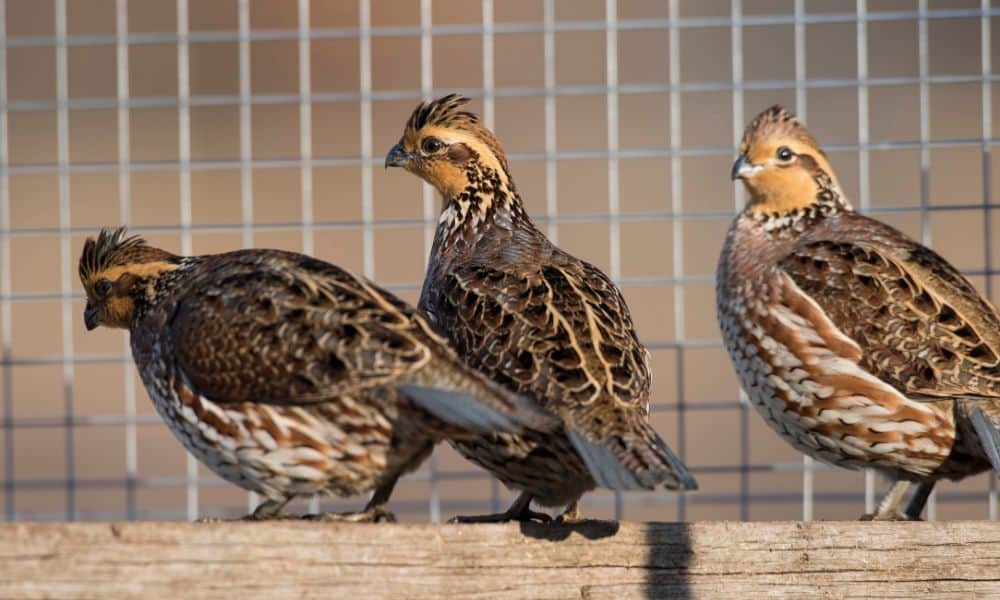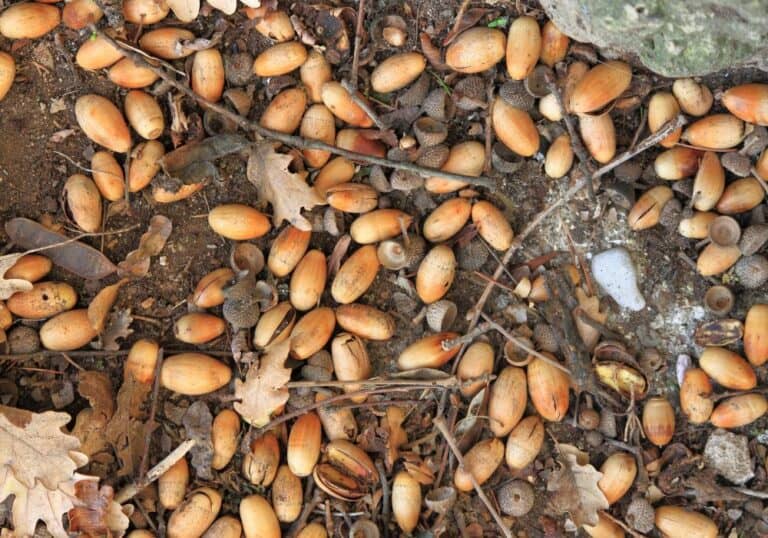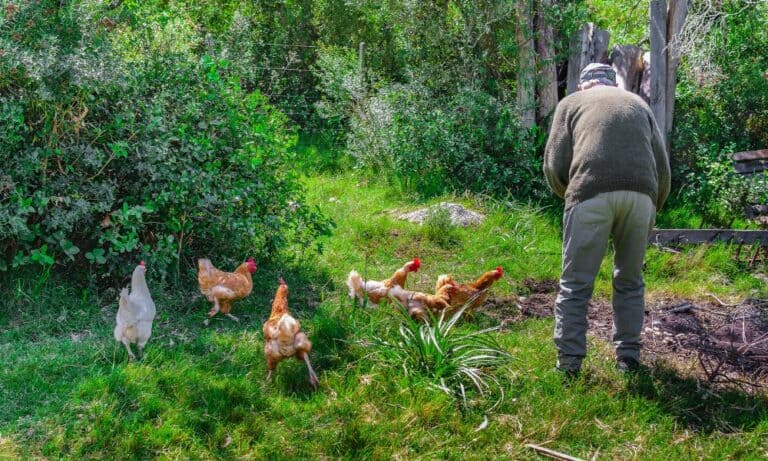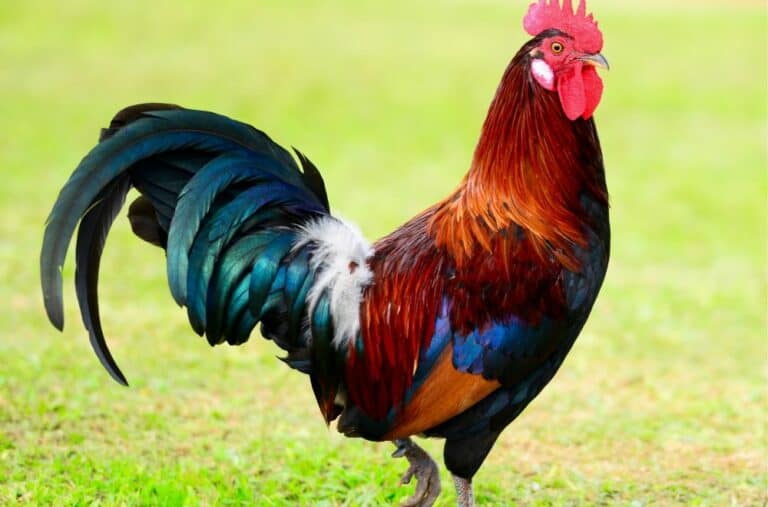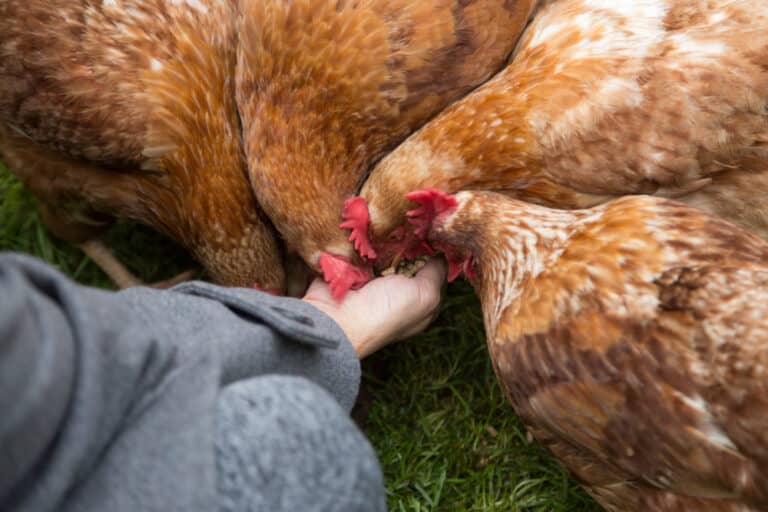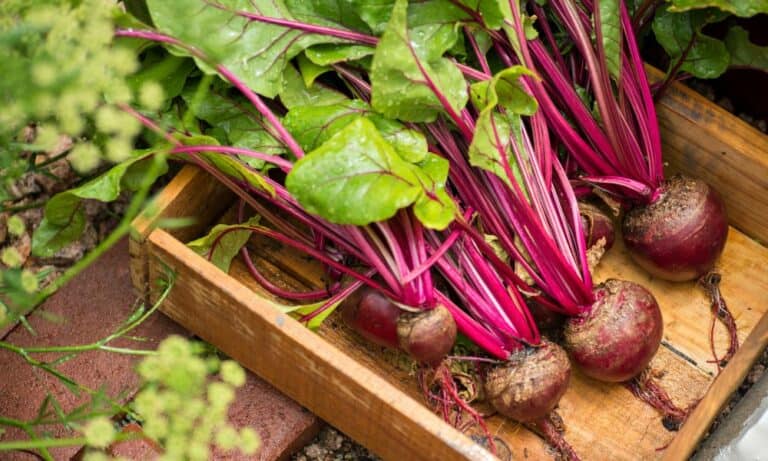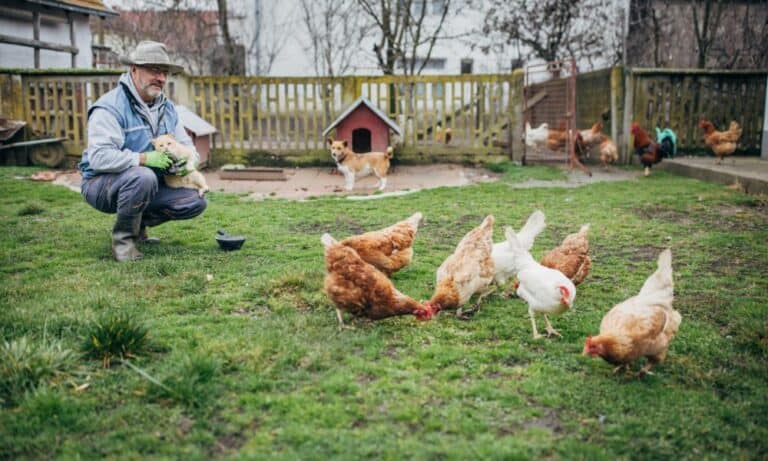About 100 quail species exist worldwide, including domestic and wild breeds. However, breeders choose only a few for raising quail for meat and eggs. These tiny birds are a viable alternative to chickens because of their size, low maintenance level, and less produced noise.
You can count on delicious meat approximately two months after getting day-old cheepers. Besides, hens are highly prolific egg layers, while eggs are nutritious and beneficial for human health.
| Feature | Japanese quails (Coturnix) | Northern bobwhite quails |
| Origin | Japan | The US, Mexico, and the Caribbean |
| Broodiness | Rarely go broody | Require environmental triggers to go broody |
| Climate tolerance | The thermoneutral zone of 64.4 to 86 F (18 – 30 C)Optimal temperatures are 70 to 80.5 F (21.1 – 27 C) | 65 to 85 F (18.3 – 29.4 C) |
| Lifespan | 2 to 2.5 years | 4 to 5 years |
| Standing height | 5.5 to 6.3 inches (14 – 16 cm) | 6 to 7.5 inches (15 – 19 cm) |
| Body length | 6.3 to 7 inches (16 – 17.8 cm) | 8 to 11 inches (20.3 – 28 cm) |
| Body width | 2.75 to 3.15 inches (7 – 8 cm) | 2.6 to 3 inches (6.5 – 7.6 cm) |
| Wingspan | 12.5 to 14 inches (31.7 – 35.5 cm) | 13 to 15 inches (33 – 38 cm) |
| Standard weight | Rooster size – 0.22 to 0.31 pounds (100 – 140 g)Hen size – 0.26 to 0.35 pounds (120 – 160 g) | 0.28 to 0.37 pounds (127.6 – 170 g) |
| Feather color | Dark brown feather with buff mottling and whitish stripes above eyes | Males have a white chin, throat, and stripe above the eyes, while these areas are buffy brown in females |
| Purpose | Dual purpose for eggs and meat | Meat and pets |
| Egg size | 0.21 to 0.56 ounces (6 – 16 g) | 0.28 to 0.46 ounces (8 – 13 g) |
| Egg color | Mottled with white, pale brown, or blue background color | Dull or creamy white |
| Annual egg production | 200 to 300 eggs | One to three clutches per year, 7 to 28 eggs per clutch |
| Achieving full size | 45 days | 3 to 4 months |
| Start of egg production | 35 to 40 days | 18 weeks |
| Incubation period | 17 to 18 days | 22 to 24 days |
| Slaughtering | 7 to 10 weeks | 5 weeks |
| Price | $4 to $7 | $4 to $5 |
The Best Quail Breeds
Quails were domesticated as songbirds in Japan in the 11th century. The first birds were exported to Europe in the 1950s when farmers started breeding them for eggs and meat.
You can recognize about twenty wild quail types and approximately 70 domestic breeds. Since their average weight is only 0.22 to 0.37 pounds (100 – 170 g), they are considered the smallest farmed bird.
Roughly estimated, about 1.4 billion quails are farmed worldwide annually, with China’s share of 80%. Their raising is popular nowadays because they are quiet, small, low-maintenance, and affordable, plus most countries don’t require special licenses to keep them.
The most common types for growing are:
1. Northern Bobwhite quails (Colinus virginianus)
This famous American quail breed has delicious meat and is an excellent option for training and hunting, but it can be challenging to raise. Besides, you can expect these birds to lay about 100 eggs annually.
There are 22 subspecies of Northern Bobwhite quails with similar females, while males vary in appearance. If you choose to breed these tiny birds, be prepared to combine one male with at least ten females. Some breeders avoid them since they take longer to start laying and reproducing.
2. Japanese quails (Coturnix japonica)
Easy-to-grow Coturnix quails are primarily meat birds, but you can also use them for training and hunting. Besides the most sizable and superb egg-laying Pharoah D1, the most popular varieties are American breeds, including:
- Golden Tuxedo and Golden Range
- Red Range and Manchurian
- Texas A&M, Rosetta, and Roux Dilute
- English White, Scarlett, Tibetan, and Italian
These quails quickly mature, grow fast, and begin laying when turning one and a half months old. You can expect 200 to 300 eggs yearly, depending on the subspecies.
You can also breed a few other less-represented quail types, including:
- California quails (Callipepla californica)
- Mountain quails (Oreortyx pictus)
- Buttonquails (Turnix Bonnaterre)
- Gambel’s quails (Callipepla gambelii)
- Blue Scale quails (Callipepla squamata)
Raising Quails for Eggs and Meat
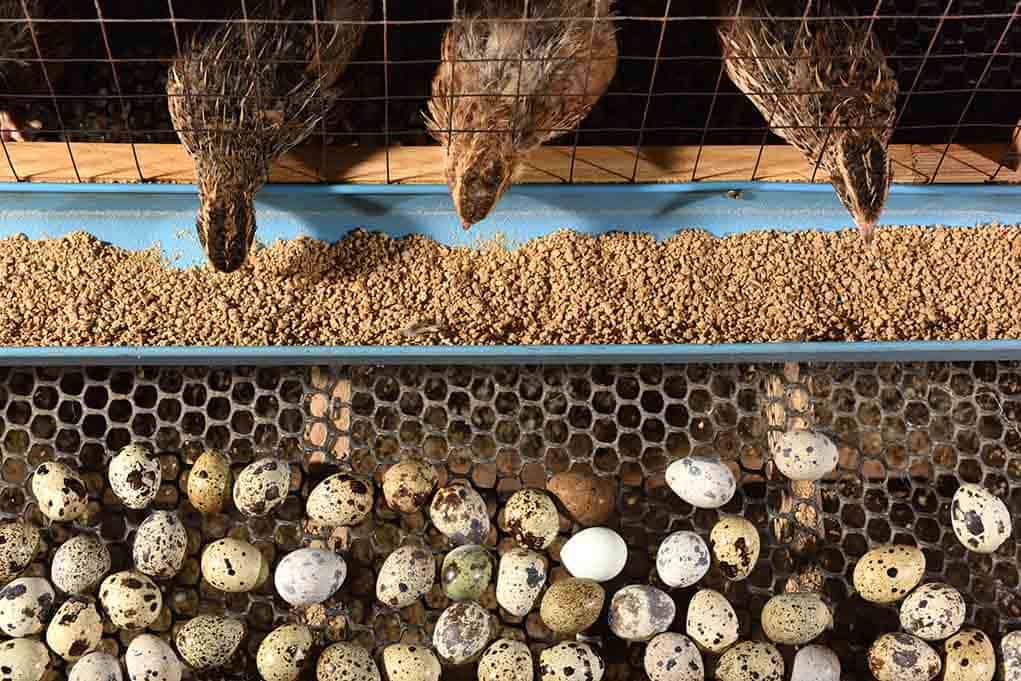
The best thing is that you can grow quails without special permission, even in cities with restrictions on chicken raising. If you keep them for eggs and meat without an ambition to raise cheepers from eggs, there is no need to have males.
Raising quails is highly beneficial because:
- Quails are prolific layers and have a high growth rate
- These small birds are pretty quiet
- Quails have delicious meat and produce healthy eggs
- You can keep quails without a special license
Be aware that there are a few ways to raise quails, depending on your time, their purpose, and available equipment.
1. Raising quails from eggs
When deciding to raise quails from eggs, collecting them within 3 to 4 days is crucial. Never wait for more than four days to start incubation. Every day of delay reduces fertility, and getting chicks from eggs older than two weeks is virtually impossible.
Incubate eggs at 99.5 F (37.5 C) and rotate them once in three days. You can expect a quail hatch at 24 to 27 days.
2. Raising quail cheepers
If you don’t have an incubator, you can buy one-day-old cheepers. Their breeding is more effortless, but you need to keep them in quarantine for three weeks before introducing newcomers to the established flock.
That way, the young will get additional care, and you can reduce disease transmission to a minimum. Prepare enough space for new chicks. For instance, you should provide 1 sq ft (0.09 m2) per:
- 4 to 6 cheepers in the first two weeks
- 4 cheepers until 6 weeks
- 3 cheepers after 6 weeks
Cheepers require different temperatures, depending on age:
- One week old – 95 to 97 F (35 – 36 C)
- Two weeks old – 90 to 93 F (32 – 34 C)
- Three weeks old – 85 to 87 F (29.5 – 30.5 C)
- Four weeks old – 80 to 83 F (26.7 – 28.3 C)
- Five weeks old – 75 to 77 F (24 – 25 C)
Once your quail chicks are six weeks old, they don’t need extra heating indoors. However, you should place a heat lamp outdoors when planning to accommodate them in an outdoor hutch.
3. Raising adult quails
You can raise quails for eggs, meat, or dual purpose. They have a few advantages compared to chickens. For instance, most species reach full size and start laying eggs once they turn 6 to 8 weeks, much earlier than chickens.
Nutrition content of quail meat and eggs |
||
| Nutrients | 3.5 ounces (100 g) of fresh meat with skin | Ten eggs |
| Calories | 192 Kcal | 158 Kcal |
| Protein | 19.6 g | 13 g |
| Fats | 12 g | 11.1 g |
| Cholesterol | 76 mg | 844 mg |
| Carbs | / | 0.41 g |
| Sugar | / | 0.4 g |
| Water | 69.6 g | 74.4 g |
| Vitamin A | 73 µg | 156 µg |
| b-carotene | / | 11 µg |
| Vitamin C | 6.1 mg | / |
| Vitamin E | / | 1.08 µg |
| Vitamin K | / | 0.3 µg |
| Vitamin D | / | 1.4 µg |
| Thiamin | 0.24 mg | 0.13 mg |
| Riboflavin | 0.26 mg | 0.79 mg |
| Niacin | 7.54 mg | 0.15 mg |
| Pantothenic acid | 0.77 mg | 1.76 mg |
| Pyridoxine | 0.60 mg | 0.15 mg |
| Cobalamin | 0.43 µg | 1.58 µg |
| Choline | / | 263 mg |
| Folates | 8 µg | 66 µg |
| Fatty acids | 3.38 g | 3.56 g |
| Calcium | 13 mg | 64 mg |
| Phosphorus | 275 mg | 226 mg |
| Magnesium | 23 mg | 13 mg |
| Potassium | 216 mg | 132 mg |
| Sodium | 53 mg | 141 mg |
| Manganese | 0.02 mg | 0.04 mg |
| Copper | 0.50 mg | 0.06 mg |
| Iron | 3.97 mg | 3.65 mg |
| Zinc | 2.42 mg | 1.47 mg |
| Selenium | 16.6 µg | 32 µg |
*by USDA
Quails are modest birds, but you should provide enough space and clean cages and waterers daily. It is also necessary to change bedding, wash feeders weekly, and feed birds fresh game feed. These birds require at least 14 hours of light, so you should include artificial lighting during winter.
There are two primary ways to keep these tiny birds.
Raising quails indoors
Since quails are tiny, you can raise a few in a large cage in your backyard, balcony, or apartment. It should be 1 to 2 feet (0.3 – 0.6 m) high for most species. Each adult bird needs at least 1 sq ft (0.09 m2) of space.
In other words, you can keep 3 to 4 birds in a cage of 2 by 2 feet (0.6 x 0.6 m) dimensions and get 3 to 4 eggs daily.
Free-ranging quails
Raising quail free-range is the most similar to their life in the wild. It is also the only way to grow them when you need birds for hunting. Even though they prefer staying on the ground, be aware that these tiny birds fly. Therefore, you should provide a solid roof or mesh over their heads, at least 8 feet (2.4 m) high.
Summary
Quails are smaller than chickens, and most states neither have any restrictions nor require special licenses for keeping them. Even though these quiet birds require low maintenance, they need enough living space and quality game feed to achieve their maximum.

